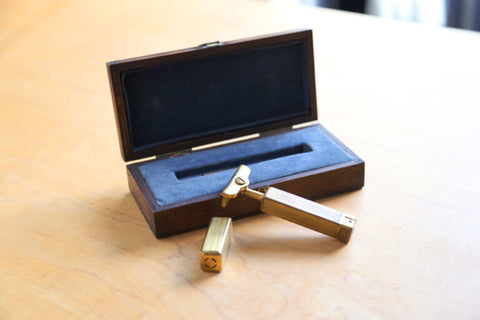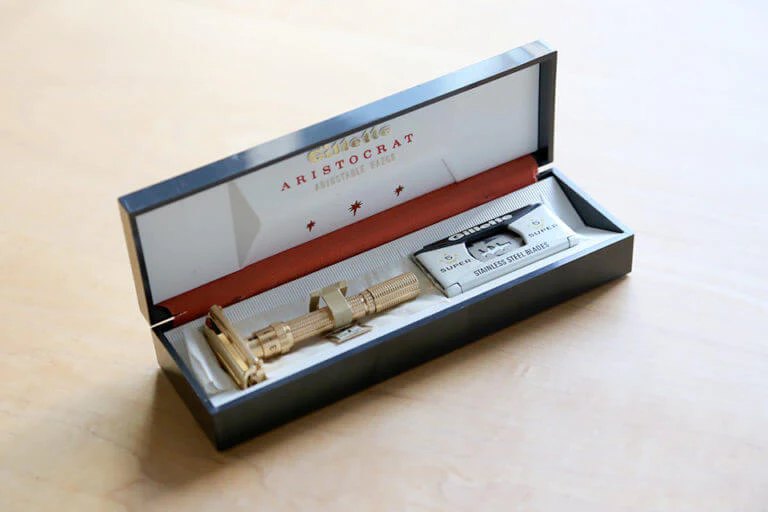世界で唯一。特殊な日本カミソリ市場
The T-shaped replacement blade safety razor, used by many wet shaving enthusiasts, was created in 1904, at the beginning of the 20th century. The inventor was King C. Gillette. Gillette’s safety razors rapidly became popular after World War I, and Gillette eventually became the razor manufacturer with the largest market share in the world, thanks to its overwhelming capital and technological prowess.
Among the major countries in the world, there is only one country where Gillette has not been able to win the No. 1 domestic market share even today. That is Japan.
The T-shaped safety razor became popular in Japan as well, starting with World War I. After the end of the war, Japan Safety Razor Industry was founded, taking over the business from German POWs. This is the current “Feather (Safety Razor Co. Feather” emerged in the early Showa period and, due in part to import restrictions during and after World War II, accounted for 80% of the domestic market in the 1950s.
With the liberalization of imports in 1960, the market for replacement blades was first opened after holders, and imports from abroad began to enter the Japanese market. In the competition that followed, it was “Schick” that conquered the Japanese market, surpassing “Gillette” and “Feather”. In 1985, we were even mentioned in the Washington Post as “the driving force behind Chic’s reign over the Japanese market, ahead of the world’s Gillette. Gillette of the world. (Koki Takeuchi, * below)”
In 1921, Jacob Schick, the founder of Schick, invented the “injector” system, a single-edged blade that can be replaced without touching the blade. Kanakura Takeuchi, the predecessor of Sanpo Shoji (the predecessor of Razor Club), who had long believed that a single-blade blade was suitable for the thick beards of the Japanese, decided to challenge the Japanese razor market, which had been dominated by Feather, with this “injector” and energetically expanded his sales network.

From the 1960s to the 1980s, there was a major shift in consumer trends in Japan. Hegemony shifted from department stores to major mass merchandisers, and it was considered a symbolic event when Daiei in Osaka overtook Mitsukoshi in Tokyo in sales in 1972. Against this backdrop, it was not only “Chic” and “Gillette” that were targeting the Japanese market. Wilkinson Sword, a British company with a strong presence in the European market, teamed up with Lion, while American Safety Razor (ASR), a Philip Morris company with a long history in the United States, teamed up with Kao to enter the Japanese market as Kao Persona. The entry of these companies, both of which had strong sales channels in toothpaste and soap and other household goods, was a major threat to their competitors at the time.

However, in the 1970s, with the decline of the double-edged razor market, “Feather” and “Wilkinson” lost market share, and Kao Persona withdrew. Finally, “Schick” took the No.1 position in the Japanese market and has held that position ever since. Even today, alongside new products featuring the latest technology, replacement blades for the Injector, which has been on the market for more than 50 years, and other famous products of the past, such as SUPER II, can still be found in drugstores and other retail stores. This is the best proof that “Schick” products have been loved in Japan for a long time.
So how did Schick become such a well-loved brand in Japan, beating the world’s Gillette and Japan’s largest feather brand?

